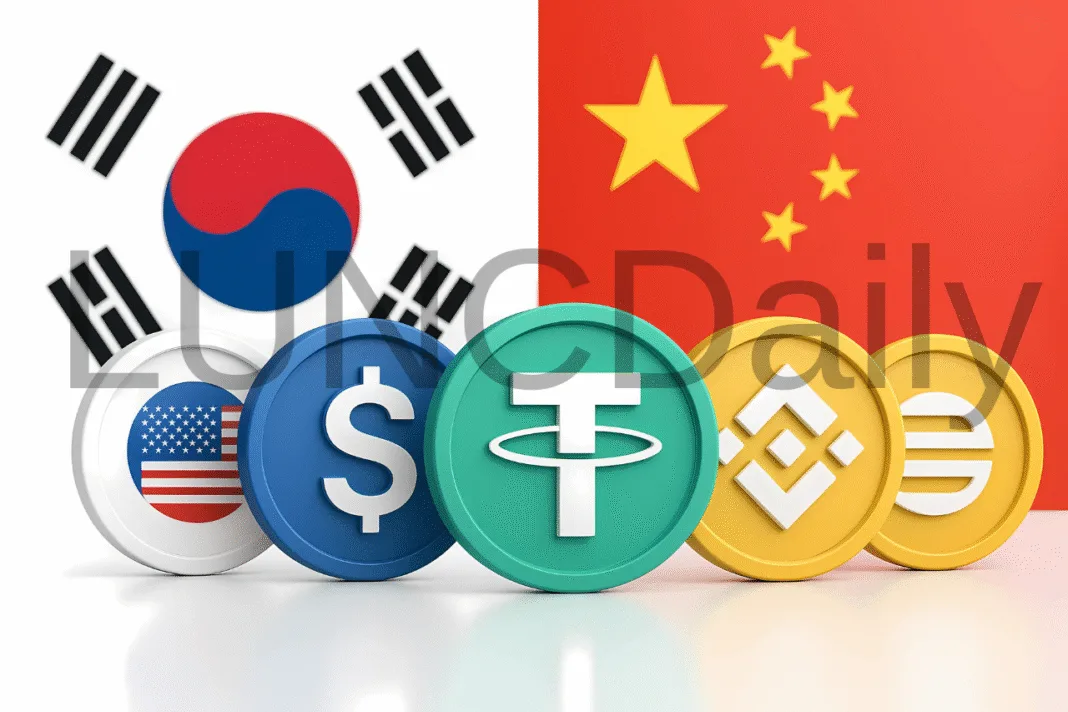China and South Korea Launch New Stablecoins — This moment is a wake up call for Luna Classic
Two of Asia’s biggest economies are moving fast in digital finance. China and South Korea have both launched new stablecoins that could change how global trade and payments are done.
At the Belt and Road Summit in Hong Kong, fintech company AnchorX introduced AxCNH, a stablecoin linked to the offshore Chinese yuan. Just one day later, South Korean custodian BDACS announced KRW1, a stablecoin backed by the Korean won and built on the Avalanche blockchain.
What is AxCNH
AxCNH is designed to make cross border payments faster, cheaper, and more transparent. It is fully backed by reserves in cash or government debt that are held by licensed custodians.
The goal is to support trade across the Belt and Road Initiative, which connects China with partners in Asia, the Middle East, and Europe. AnchorX calls AxCNH the first licensed offshore yuan stablecoin, showing China’s interest in expanding its currency influence through digital assets.
What is KRW1
KRW1 was introduced by BDACS in South Korea. It is still in a proof of concept stage, but each KRW1 is backed one to one by reserves stored at Woori Bank, one of the country’s largest financial institutions.
Woori Bank provides real time verification through an API system, which allows users to confirm that KRW1 is fully backed. Built on the Avalanche blockchain, KRW1 is designed for payments, remittances, and even government services such as emergency funding.
Why Not Luna Classic
For the Luna Classic community, this news raises a serious question. Luna Classic already has its own stablecoins, such as KRTC for the Korean won, CNTC for the Chinese yuan, and HKTC for the Hong Kong dollar.
So why did South Korea choose Avalanche instead of using the Luna Classic blockchain for KRW1
The answer is governance. At the moment, Luna Classic is seen as lacking professional leadership and strong coordination. Without a clear and trusted system, it is difficult for major projects or governments to use Luna Classic for something as important as national stablecoins.
What the Community Must Do
This should be a wake up call for the Luna Classic community. If China and South Korea had chosen Luna Classic for their new stablecoins, the impact on LUNC would have been huge. Trading volume would rise sharply and Luna Classic could have become part of the financial backbone of Asia.
China is already the second largest crypto holder in the world, while the Korean won is one of the top five currencies traded against Bitcoin. Missing this chance shows that Luna Classic needs major reforms.
For LUNC to stay relevant, the community must focus on building professional governance, strong leadership, and a long term strategy. Only with real change can Luna Classic position itself as a serious choice for global projects and avoid being left behind.

